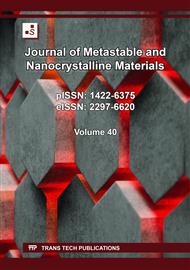p.1
p.15
p.25
p.37
p.45
Evaluation of Black Powder Formation in Natural Gas Transporting Pipelines Network and Study of Thermal Decomposition Kinetics under Inert Atmosphere
Abstract:
The corrosion product so-called black powder forms inside gas pipelines and negatively affects gas pipelines during the flow of gas therefore it needs continuous follow-up, collecting, and regular maintenance, to understand its physical characteristics and its nature is necessary for field operators to select the appropriate separation technique and to understand the possible roots causing the formation, there are certainly nanoparticles in the form of a large portion due to the effect of heat and moisture. The purpose of present work is to spot the light on black powder produced in gas pipelines by identifying the organic deposit around it, determining the percentage of deposit, determining the kinetic parameter, and thermodynamic parameters by utilizing TGA. Identification of metal power has been achieved by RDX. The black powder was subjected to three identifications first FTIR was to get clear information about the nature of the powder. It showed that the major was organic sulfurs and aromatic hydrocarbons deposited on the outer surface, XRD identified the kinds of iron oxides of iron oxide Fe2O3, and hydrated iron oxide FeOOH that formed mainly due to water condensate at dew point and water of periodical upsets, third TGA and DTG to determine the kinetics, and thermodynamics parameters and the percentages of organic hydrocarbons deposited on the outer surface of black powder by using Coats-Redfern at different heating rates including (10, 15, 20, and 25) Cº/min by using the flow rate 20 ml/min of helium as an inert gas, Activation energy increased 28.226-26.214 kJ/mole within the heating rate of 10-20 Co/min, and entropy showed a decrease -281.749 to -279.66 J/Kmol, and enthalpy showed the same trend.
Info:
Periodical:
Pages:
37-44
Citation:
Online since:
August 2024
Authors:
Keywords:
Price:
Сopyright:
© 2024 Trans Tech Publications Ltd. All Rights Reserved
Share:
Citation:


